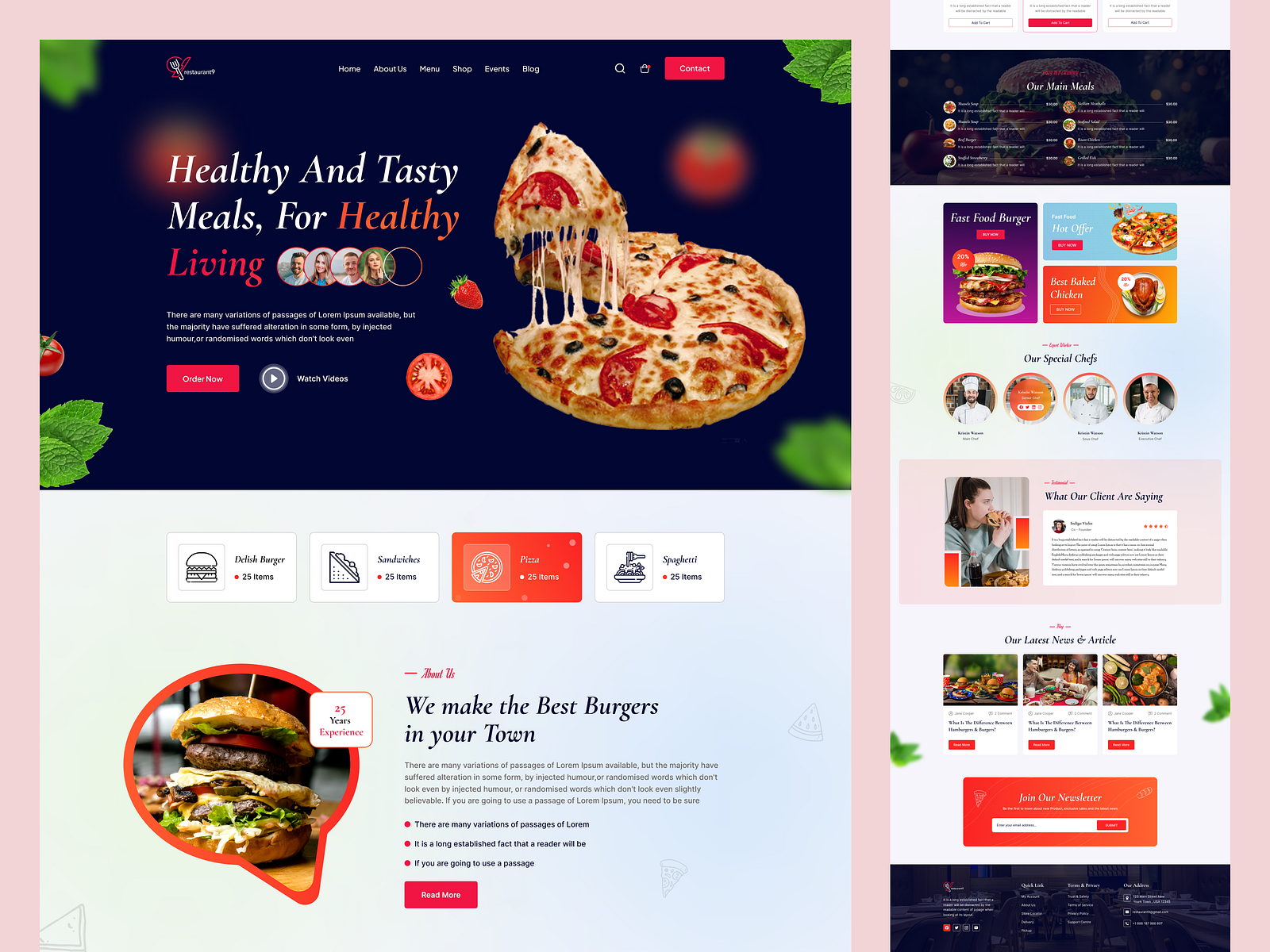How Website Design Can Improve Conversion Rates and Sales
How Website Design Can Improve Conversion Rates and Sales
Blog Article
Necessary Tips for Crafting High-Impact Website Designs
In the realm of electronic advertising, the style of a website serves as a critical touchpoint for engaging possible clients. To develop high-impact website designs, one need to consider vital components such as target market understanding, user experience, and visual pecking order.
Understand Your Target Market

To efficiently recognize your audience, start by conducting group evaluations to collect data on age, gender, location, and rate of interests - website design. This information functions as a structure for producing individual personalities, which stand for the key attributes of your target audience. These characters overview decision-making in style components and web content strategy, making sure alignment with user expectations
In addition, assessing user habits via devices like Google Analytics can reveal exactly how site visitors communicate with your website. Metrics such as bounce prices and time on page can highlight areas that require renovation or adjustment. Customer surveys and feedback additionally offer indispensable understandings into preferences and discomfort factors.
Inevitably, a deep understanding of your audience is not just helpful yet necessary. It empowers developers to create even more relevant, appealing, and useful web sites that promote a positive user experience and drive desired end results.
Prioritize Customer Experience
When developing a site, focusing on user experience (UX) is paramount to achieving both user complete satisfaction and company objectives. A well-crafted UX ensures that visitors can browse the website effortlessly, locate the info they need, and engage with material effectively. To accomplish this, it is vital to embrace a user-centered layout strategy that includes understanding individual needs, choices, and behaviors.
Beginning by carrying out complete research study, including user surveys and functionality screening, to gather understandings right into just how customers communicate with your website. This data should inform style choices, guaranteeing that layouts and attributes line up with user expectations. Streamlined navigation is important; site visitors must be able to situate information rapidly without unneeded clicks or confusion.
In addition, think about the loading rate of your web site. A slow-loading website can lead to high bounce rates, negatively impacting customer experience. Enhance pictures and manuscripts to boost performance.
Finally, guarantee that your web site is obtainable to all customers, including those with specials needs. Following ease of access criteria not just widens your target market however additionally cultivates inclusivity. By prioritizing UX, you lay the foundation for an effective site that satisfies both user needs and business objectives.
Embrace Visual Pecking Order
A well-structured visual pecking order plays a significant duty in improving user experience by assisting site visitors' attention to the most crucial aspects of a site (website design). By purposefully setting up material, developers can produce a clear path for individuals to comply with, ensuring they involve with crucial details successfully
To apply visual hierarchy, begin by utilizing dimension and scale. Bigger aspects naturally draw the eye, making them best for headlines or phones call to action. Enhance this with contrasting colors that highlight vital locations, as vivid colors can create focal points that catch attention.
Furthermore, the placement of elements on the web page is crucial. Leading the visitor's gaze with the format can be attained by placing important information on top or in the facility, where users typically begin their aesthetic journey. Integrating whitespace around aspects can additionally boost clarity, making it easier for customers to refine imp source details without feeling overwhelmed.
Finally, using typography effectively adds to visual power structure. Different typeface styles, dimensions, and weights can signify relevance, guiding users through the material seamlessly. By find more information accepting these concepts, designers can produce an instinctive experience that fosters engagement and encourages individuals to explore further.
Enhance for Mobile
Mobile optimization is necessary in today's digital landscape, as a substantial section of web website traffic originates from mobile phones. To make sure a seamless individual experience, internet sites need to be designed with mobile users in mind. This entails using responsive website design techniques that adjust the layout, pictures, and text to fit numerous screen dimensions while preserving functionality and aesthetics.

Touch targets, such as web links and switches, should be suitably sized, guaranteeing they are conveniently tappable without mistakes. Ensure that types are mobile-friendly by minimizing input fields and utilizing dropdowns where applicable, streamlining the individual experience.
Finally, test your website throughout various mobile phones and internet browsers to recognize any issues blog that might impact use. By prioritizing mobile optimization, you not just enhance customer fulfillment but likewise favorably affect your website's online search engine ranking, thus drawing in more visitors and improving total involvement.
Implement Solid Branding
Creating a well-known and natural brand name is basic to establishing a solid on the internet presence. A well-defined brand not only differentiates you from competitors but likewise promotes trust and commitment among your audience. To apply strong branding, begin by creating a clear brand name identification that envelops your mission, values, and vision. This identification must be shown consistently across all electronic touchpoints, including your site, social media sites, and email communications.
Visual elements such as logos, color design, and typography play a critical duty in branding. Pick a color scheme that reverberates with your target market and mirrors your brand character. Make sure that your logo design is versatile and plainly presented on your internet site, improving brand name acknowledgment.
Content is equally crucial; your tone of voice should align with your brand name identity, whether it's expert, pleasant, or reliable. Involving narration can additionally enhance your brand, producing a psychological link with users.
Final Thought
To conclude, crafting high-impact web site styles demands a diverse technique that encompasses comprehending the audience, prioritizing user experience, and welcoming aesthetic pecking order. Optimization for smart phones continues to be necessary, together with the implementation of strong branding techniques. By incorporating these aspects, internet sites can efficiently engage individuals, facilitate seamless navigating, and foster psychological connections that enhance brand name identification. Inevitably, adherence to these principles adds to the creation of efficient and compelling electronic experiences that resonate with target market.
To produce high-impact website styles, one must take into consideration vital aspects such as audience understanding, user experience, and visual pecking order.When developing a website, prioritizing user experience (UX) is extremely important to attaining both user contentment and service goals.Beginning by carrying out comprehensive study, consisting of customer surveys and usability screening, to gather understandings right into exactly how customers communicate with your site. To make sure a seamless user experience, websites must be created with mobile customers in mind.In verdict, crafting high-impact internet site designs demands a multifaceted technique that includes comprehending the target market, prioritizing individual experience, and accepting visual pecking order.
Report this page